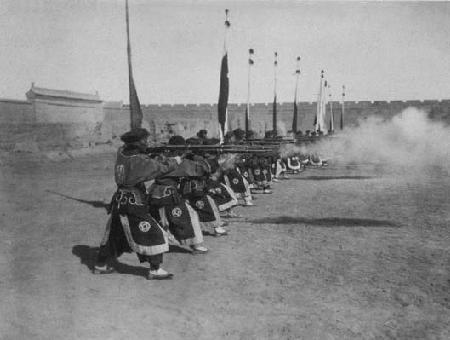


The objectives of the expedition were scientific: arhaeological, geographical, ethnograpic, linguistic, historical and biological.
In those days the Russian main staff considered it very important to acquire information about the Heavenly Empire, particularly about the conditions in the border areas. Measures were taken in western China to reorganize the army according to Japanese model, so that this territory could be colonized by the Chinese and joined more permanently to China proper. There were also active British interest spheres in the area, and Dalai Lama had been forced to take refuge in eastern Turkestan. With the consent of Foreign and War Ministries, the decision was made to take advantage of the Pelliot expedition and to acquire the permission of the French government to include a Russian officer as a "civilian" in the expedition. He was to be equipped with all kinds of means, appropriate for ethnological and biological research. According to various programmes, he was to assemble military intelligence about the western and northern border provinces of China, the reforms in the army and government and the military political situation as well as the march routes from Russia in the direction of Lanzhou and Peking.
The chief of the main staff, Palitshyn, chose Mannerheim to be the representative in the expedition, because he was acquainted with China, Pelliot knew him or at least knew about him, he was fluent in several languages, was of Finnish origin (and was able to use the Finnish passport instead of the Russian one) and met the other requirements that he would be confronted with. The final decision was reached in 1906. For his commanding mission Mannerheim was afforded two years’ salary in advance, the travelling costs from St Petersburg to Peking, money for equipment, and additional salary amounting to 15,000 francs a year. Nevertheless, the Finnish Colonel had to collect money for ethonological and historical research also from Finland. The trip eventually lasted for more than two years, and the general staff had to make corrections to their estimate.
Pelliot was favourably disposed towards Mannerheim’s participation in the expedition, but in addition to the permission of the French government, he required that the officer in question would be subordinated to him in all matters concerning the route and management of the expedition. All the arrangements were to be made in a fashion that would not arouse any suspicions or ill-will in the Chinese authorities. Pelliot asked for support and financial assistance for the expedition. In return, he promised that any observations and results of interest would be at the disposal of the Russians after the expedition.
Mannerheim travelled in the company of the French explorers from Tashkent to Kashgar, from July till October 1906. Louis Vaillant, a medical officer of the 2nd rank in the Colonial Army, and photographer Charles Nouette were also members of the expedition. The relations between Pelliot and Mannerheim were strained to the utmost in questions of finance and command. Mannerheim found Pelliot stingy and extremely particular about his position as the leader of the expedition. After some negotiations Mannerheim disengaged himself from the subordinate position and formed his own expedition soon after they had crossed the Chinese border. Despite the plans he had made, Mannerheim never caught up with Pelliot’s expedition during the two years the trip lasted.
According to the mission he had been given, Mannerheim became familiar with the military situation in China, made notes in his diary, took photographs and drew sketches of maps. The authorities were very willing to give him information. Mannerheim spent a month in the autumn of 1908 in the Russian embassy of Peking arranging his notes, and after his return wrote an extensive report on the journey. He was also given a chance to introduce the results of the expedition to the Emperor. The main idea was to occupy the provinces of Sinkiang and Gansu and to cut China in two. The report was printed in 1909 for official use in the Russian army.
Military Ranks | Military Career in Russia | Russian Army | Imperial Guard | Administration of Imperial Stables | Nicholas II | In Russo-Japanese War | Chinese Expedition 1906-1908 | Scientific Expedition in Asia | Time in Poland | World War I | Mannerheim in World War I | Cross of St George | Sword of St George | Russian Revolution | Resignation from Russian Service
COURSE OF LIFE | FAMILY | TIME OF GROWTH | MILITARY CAREER | WAR OF INDEPENDENCE | REGENT 1918-1919 | CIVILIAN | DEFENCE COUNCIL | COMMANDER-IN-CHIEF 1939-1946 | PRESIDENT OF THE REPUBLIC 1944-1946 | RETIREMENT | SPECIAL TOPICS | SEARCH


